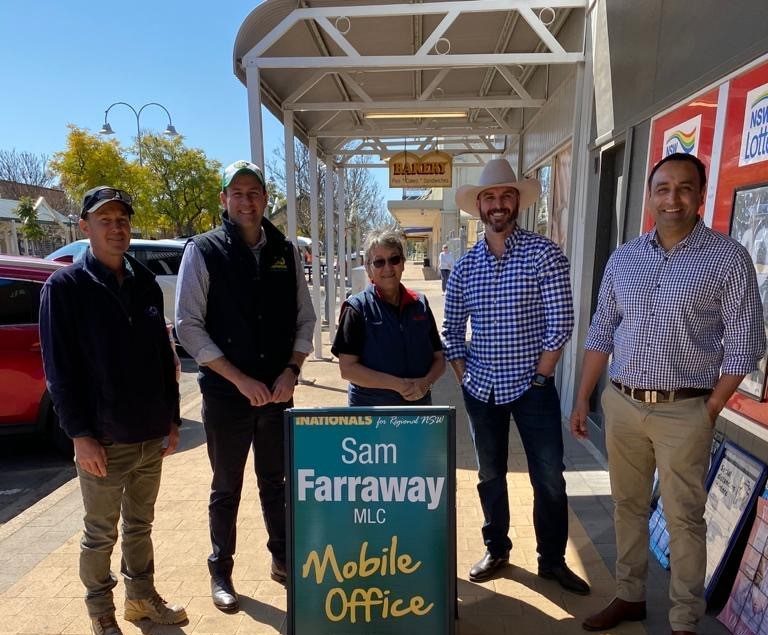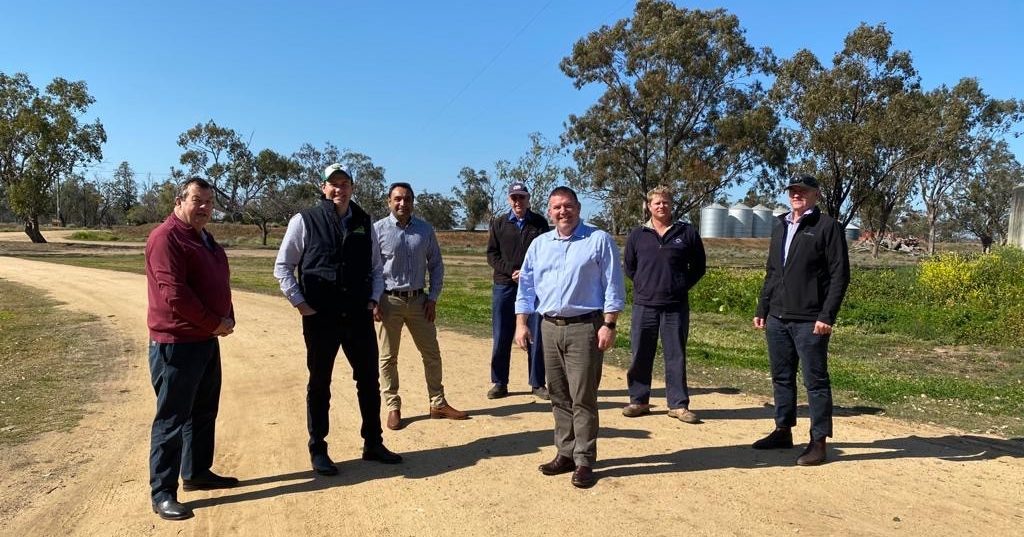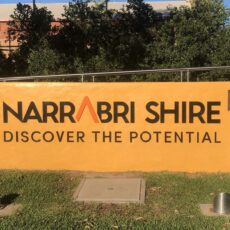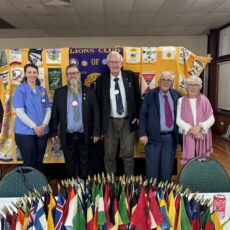NSW National Party politicians toured the Wee Waa region last week meeting with residents at the Wee Waa Bakery, business owners in the main street and farmers as well as Namoi Water representatives at Richard and Carmel Schwager’s property ‘Fernleigh’.
The politicians included Upper House MLC Sam Farraway, Member for Coffs Harbour Gurmesh Singh and Member for Dubbo, Dugald Saunders.
The group also met with parents and teachers from Wee Waa and Narrabri High Schools to discuss securing courses such as agricultural science and ensuring students can continue to get a good education locally.
“It was great to be able to show off Wee Waa to my Nationals colleagues, it is a great community filled with passionate people,” said Mr Farraway.
“To be able to discuss issues like education, floodplain harvesting and native vegetation with other members was a great opportunity.
“It demonstrated how issues that affect northern communities like Wee Waa are also relevant elsewhere and if we all work together we can tackle those issues head on.
“The Nationals represent regional NSW and sometimes in order to get a better understanding of the big issues, you need to look further than your own backyard.
“I hope my colleagues learnt a lot from this visit and can now go back and continue to serve their communities with some fresh ideas.
“Thank you to the entire Wee Waa community for being welcoming and taking time out of their days to talk with us, it is so important that we, as MPs, get feedback from those out there on the ground.
“It is how we become better representatives for our regions and know what we need to go in to bat for.”
Mr Farraway was also alongside NSW Deputy Premier John Barilaro last week when he announced a $9.45 million grant to build new laboratories and facilities at the University of Sydney’s Plant Breeding Institute.
Mr Barilaro said research that could boost drought tolerance of wheat, help growers better control weeds and develop robotic farming technology for use across Australia will be undertaken in Narrabri, thanks to the NSW Government grant.
It’s estimated 40 new research positions will be created, along with construction jobs, as part of the development of a state-of-the-art International Crop and Digital Agriculture Research Centre.
Mr Barilaro said the new research facility will include genetic and agronomy laboratories, a modern office and digital and robotic workspaces that will help attract new research opportunities and support the 40,000 field plots that grow the crops being researched.
“We’ve seen the devastating impacts that this record drought has had on farmers and communities across regional NSW and the research that will be undertaken at this new facility will help boost our resilience to future dry spells,” said Mr Barilaro.
“This research will centre around adapting crops for drought tolerance, providing food security solutions and boosting productivity of farmers.”
Mr Farraway said the project will provide the agricultural sector with greater certainty about the future and create employment opportunities to the region.
“This facility will bring new skilled jobs to Narrabri, along with national and international visiting researchers using the on-site, 250-person conference facilities creating flow on effects for the local economy and boosting accommodation and hospitality trade,” Mr Farraway said.
“This research is great news for farmers, as the outcome will be breeding more robust crops which creates better resilience for the future and boosts confidence, productivity and investment in wheat production, in turn securing Narrabri’s long-term future.”
Grains Research Development Corporation Chair John Woods said an additional $1 million had been invested on behalf of grain growers in partnership with NSW Government, while the University of Sydney and Wheat Research Foundation had contributed another $1.5 million to improve and expand the vital research facilities.
“We appreciate the NSW Government recognising the need for an industry-led approach to improving and expanding the research capacity of the IA Watson Centre, one of the state’s oldest, most strategically important and successful centres.”












